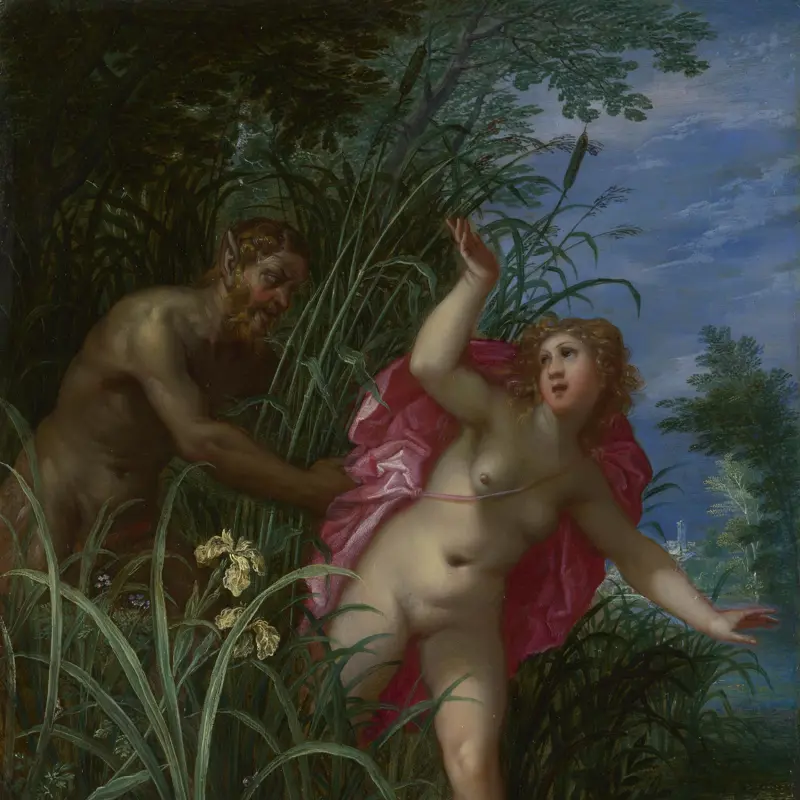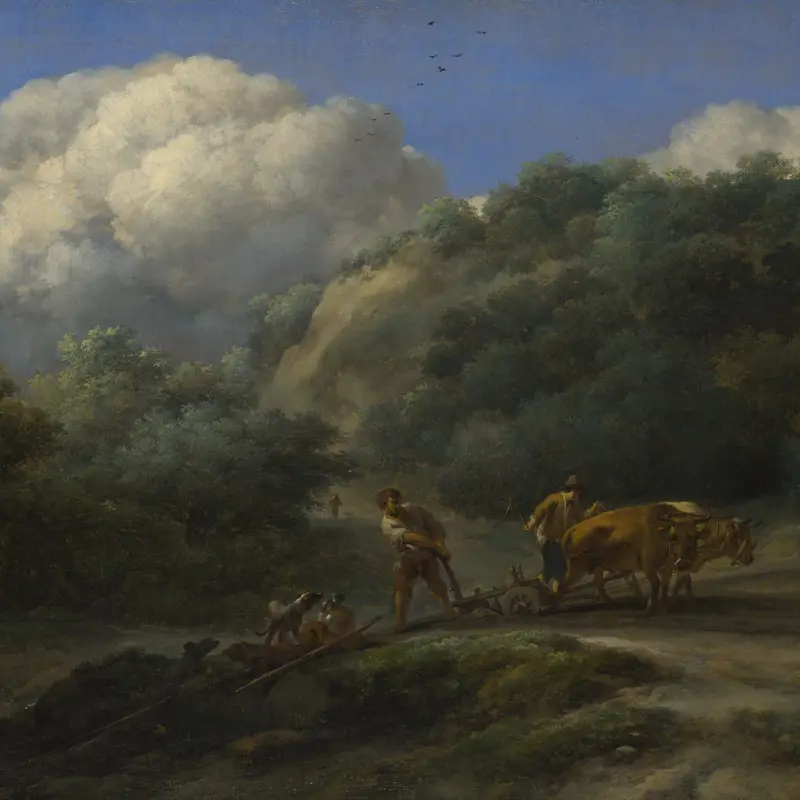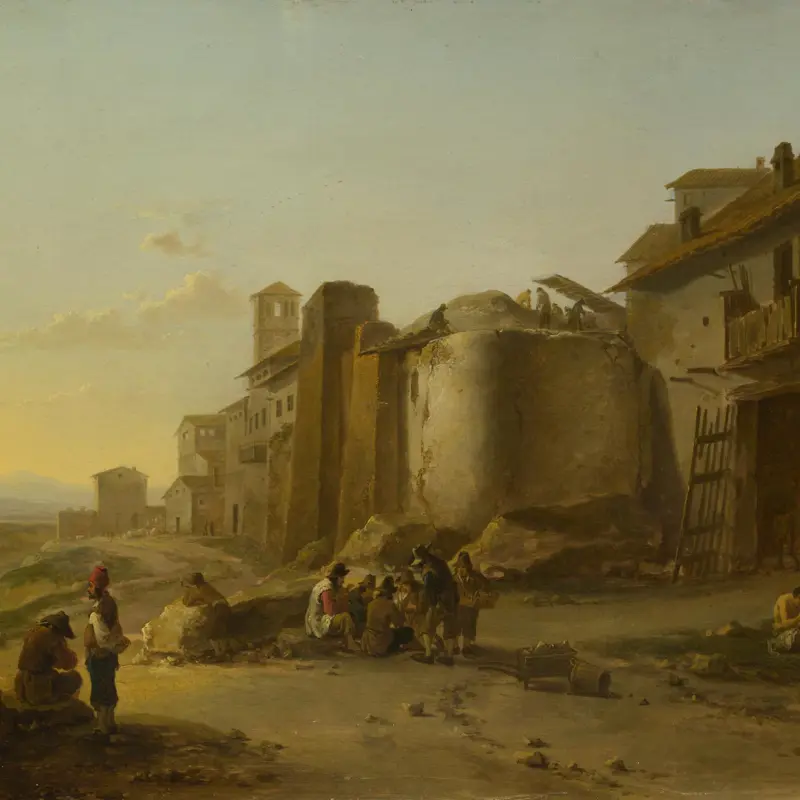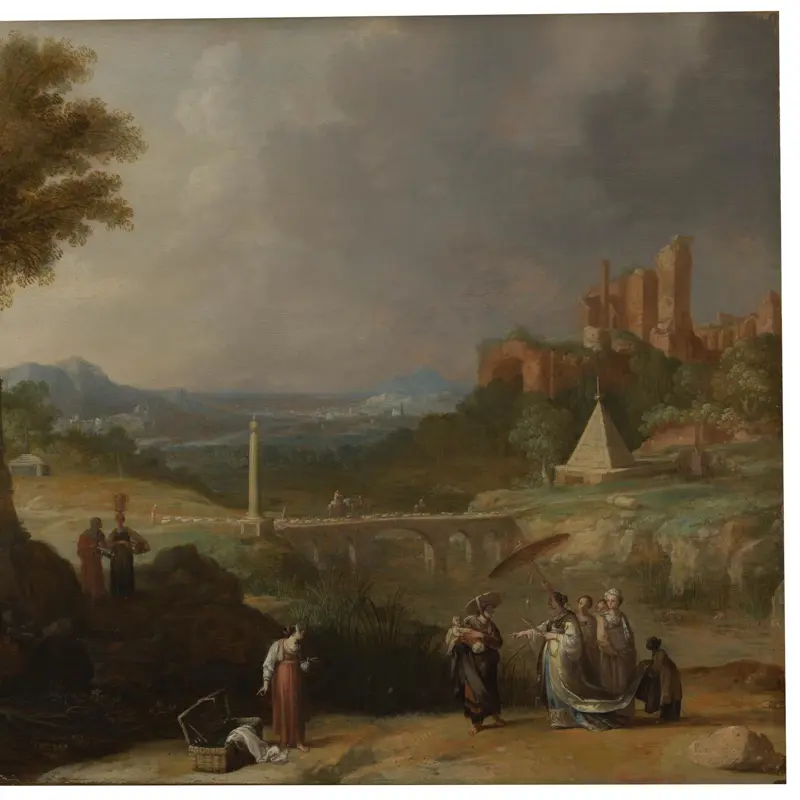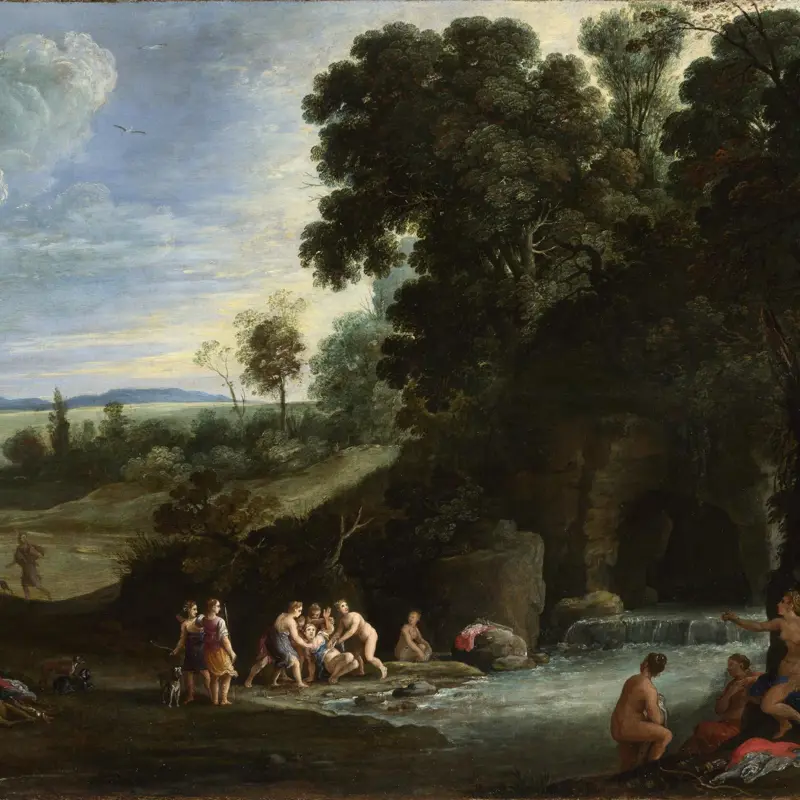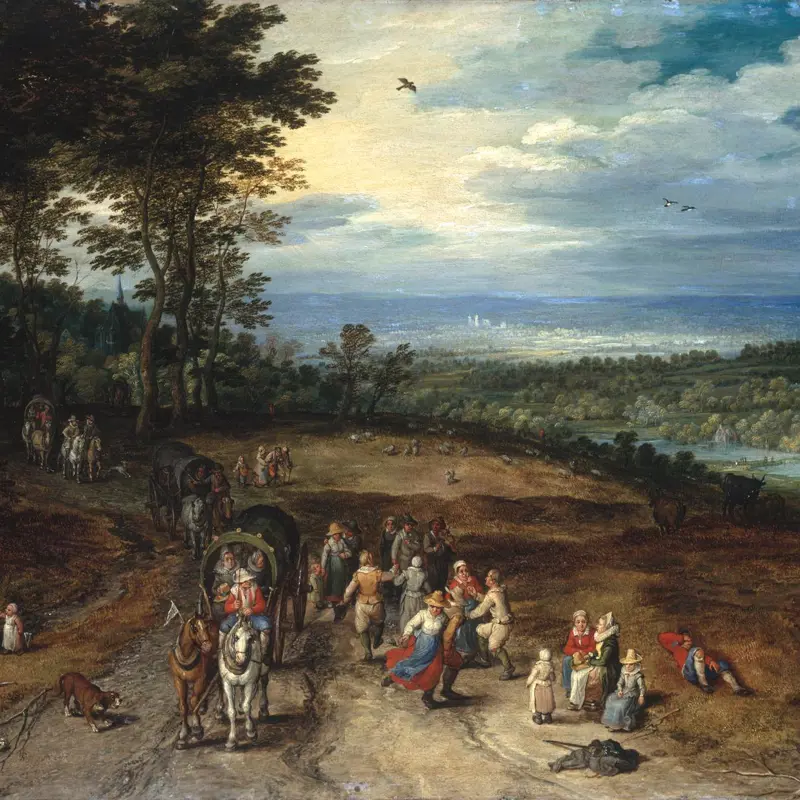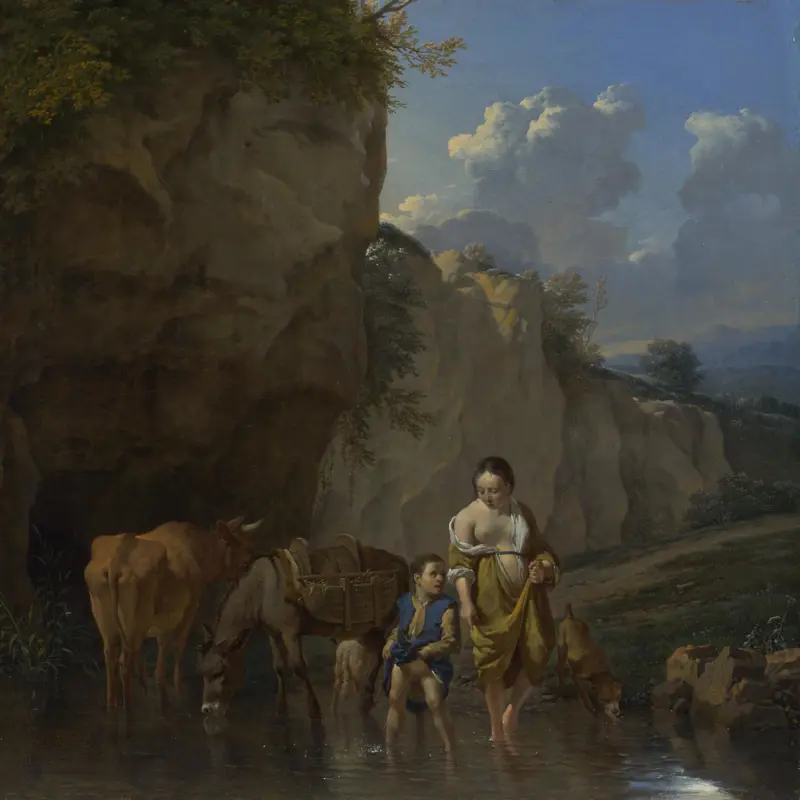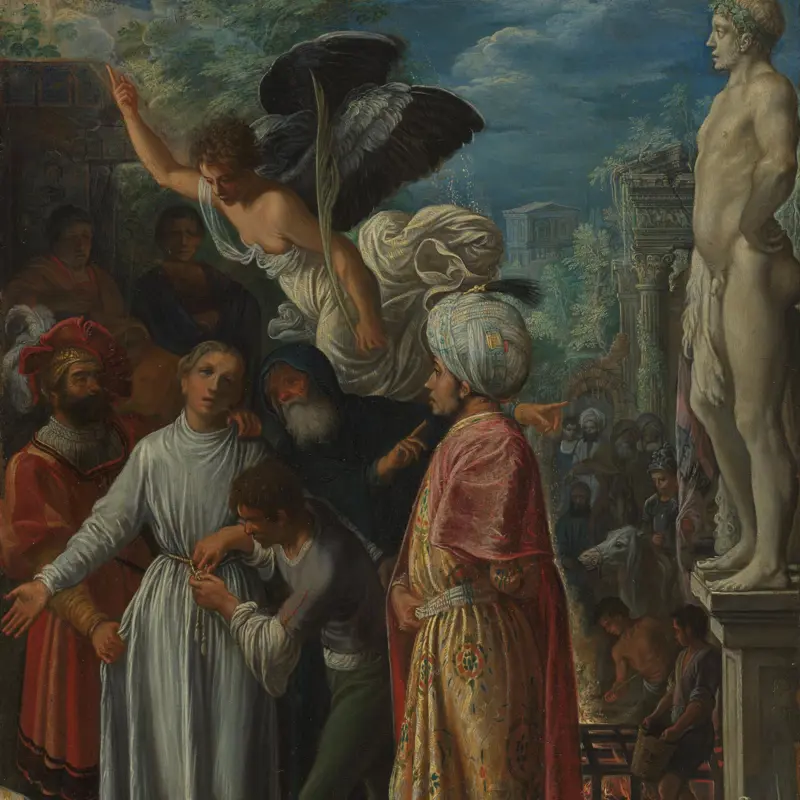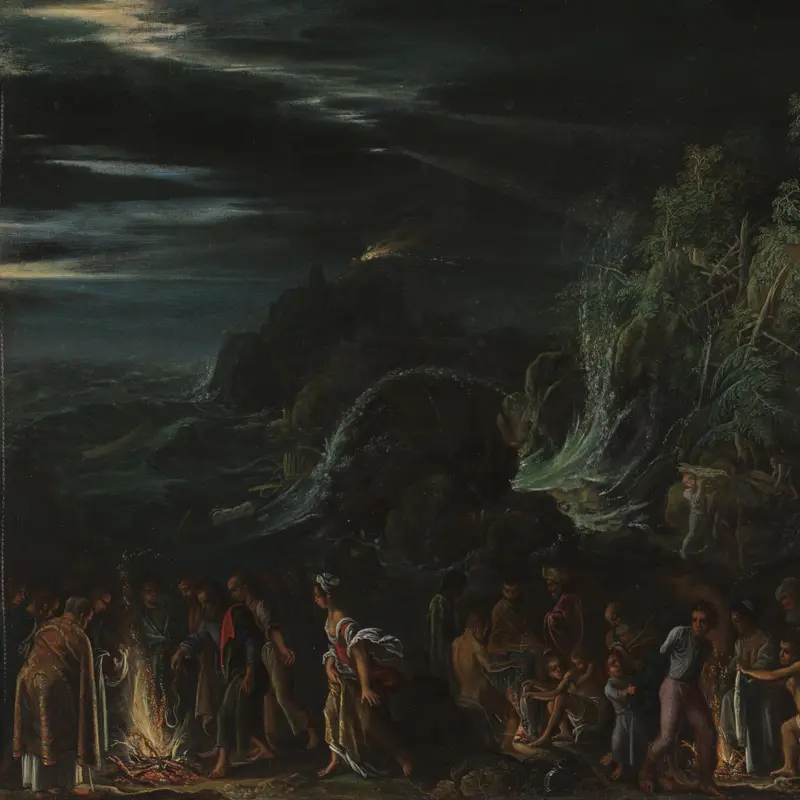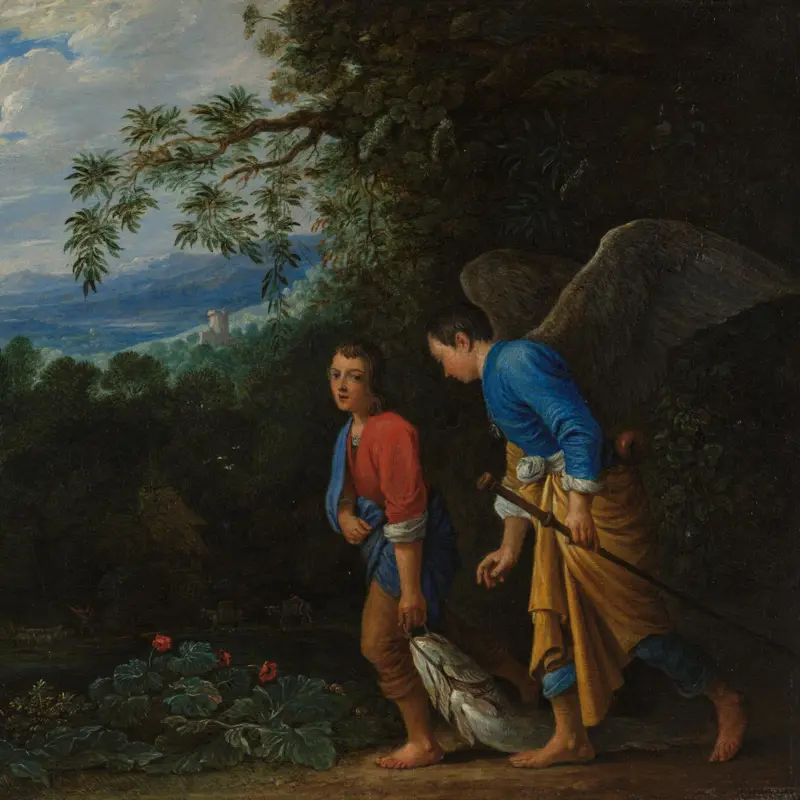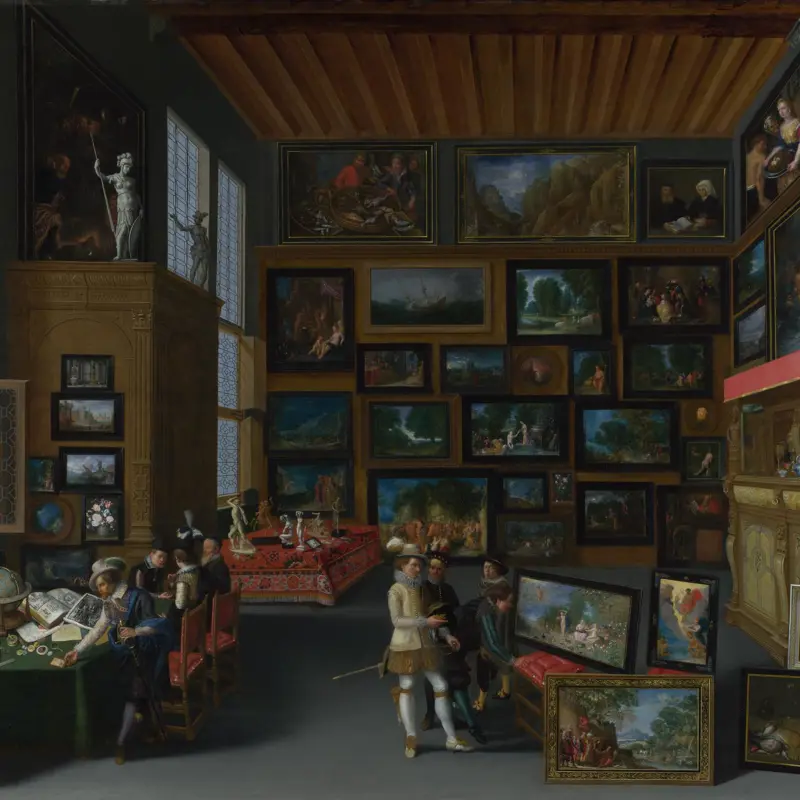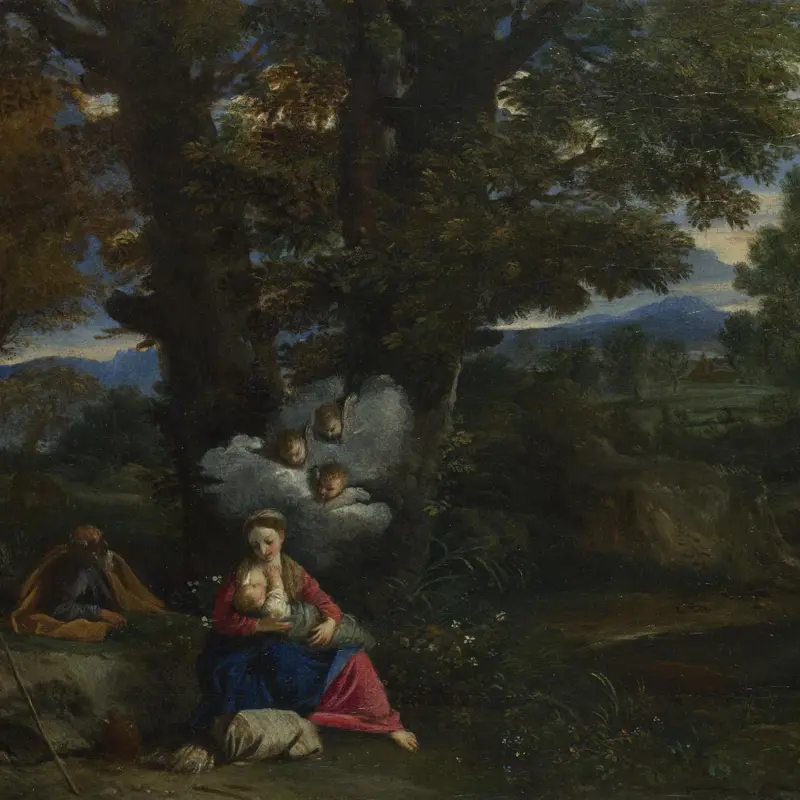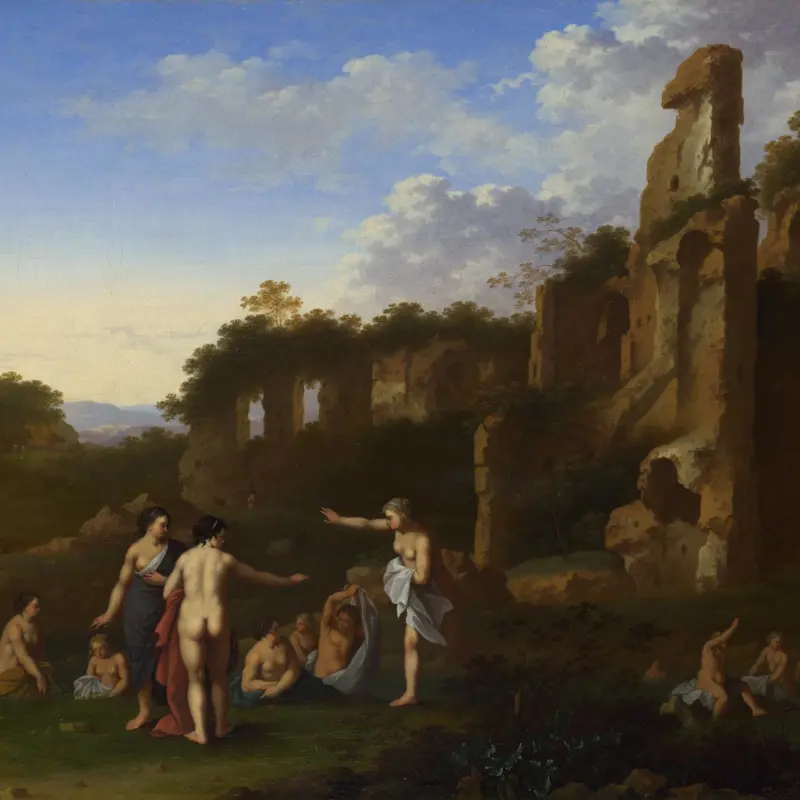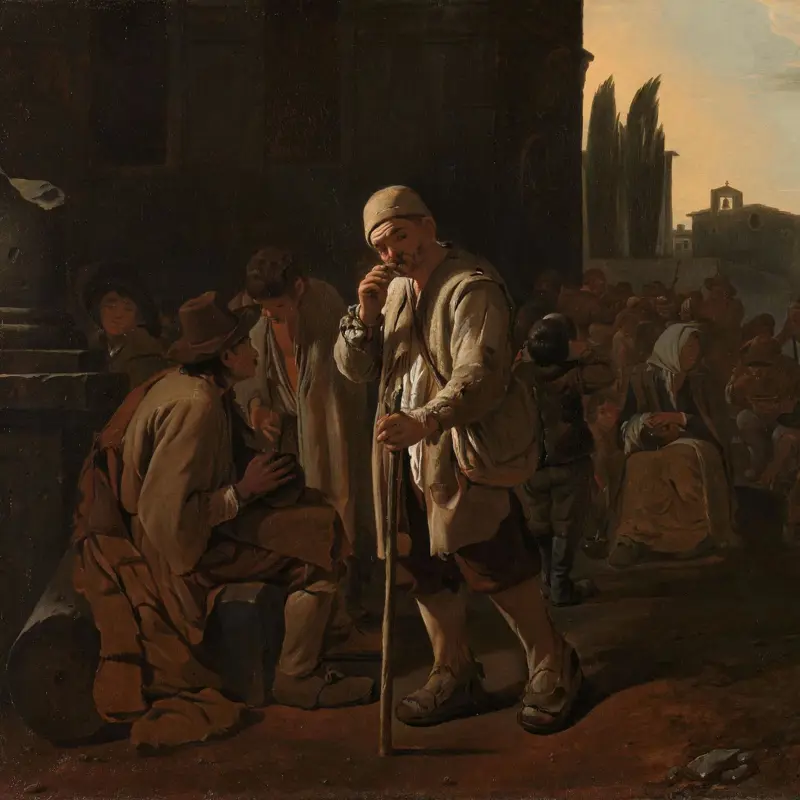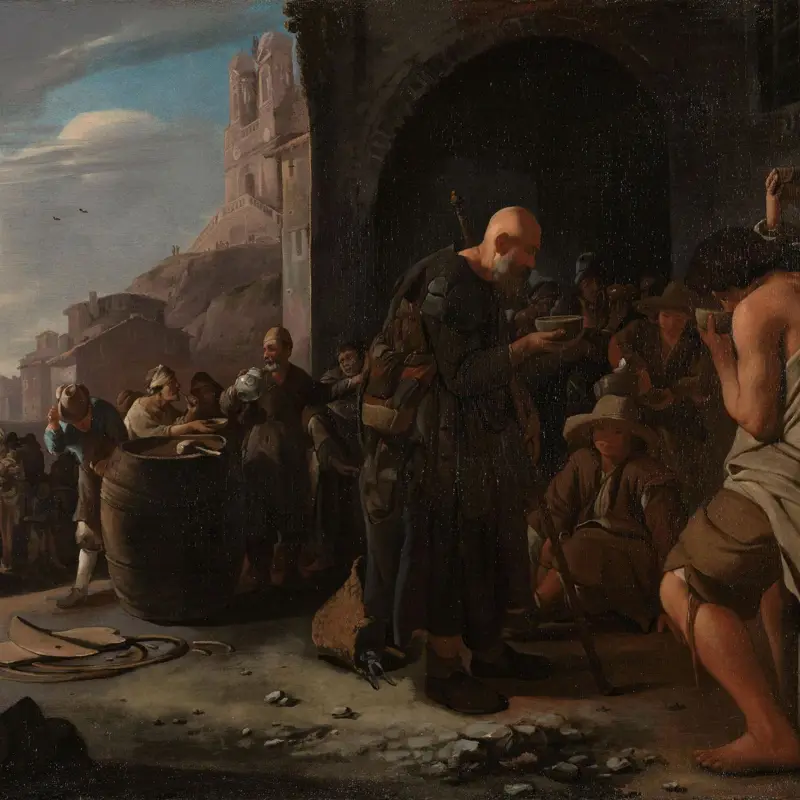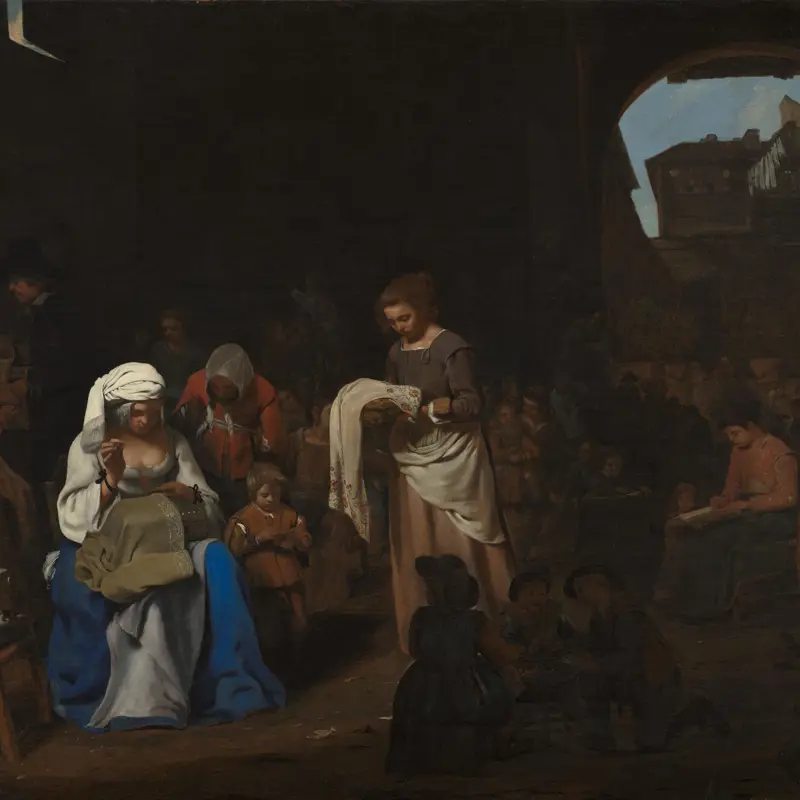During the early 17th century, the Italian travels of several Dutch artists motivated them to paint picturesque and idyllic landscapes inspired by the Italian countryside. Their landscape paintings – often on a small scale – are bathed in the warm, golden light that they had experienced in Italy. They frequently included Italian architectural elements and the classical ruins that they had seen there, but a taste for realistic details betrays their Northern roots.
The Utrecht painter Jan Both began a second wave of Italianate landscape painting in the Netherlands around the middle of the 17th century. He introduced to Dutch landscape painting a style based on the Roman works of the French painter Claude (1604/5?–1682). Jan Both was highly influential on a new generation of artists, including some who never visited Italy, such as Nicolaes Berchem.
Their works are accompanied here by those of other artists profoundly influenced by their Italian experience. They include the German painter Adam Elsheimer whose small paintings look to Venetian art, and the enigmatic Flemish painter Michael Sweerts, best known for his sensitive depiction of Roman daily life. Also included are small-scale landscapes by their Italian contemporaries.


